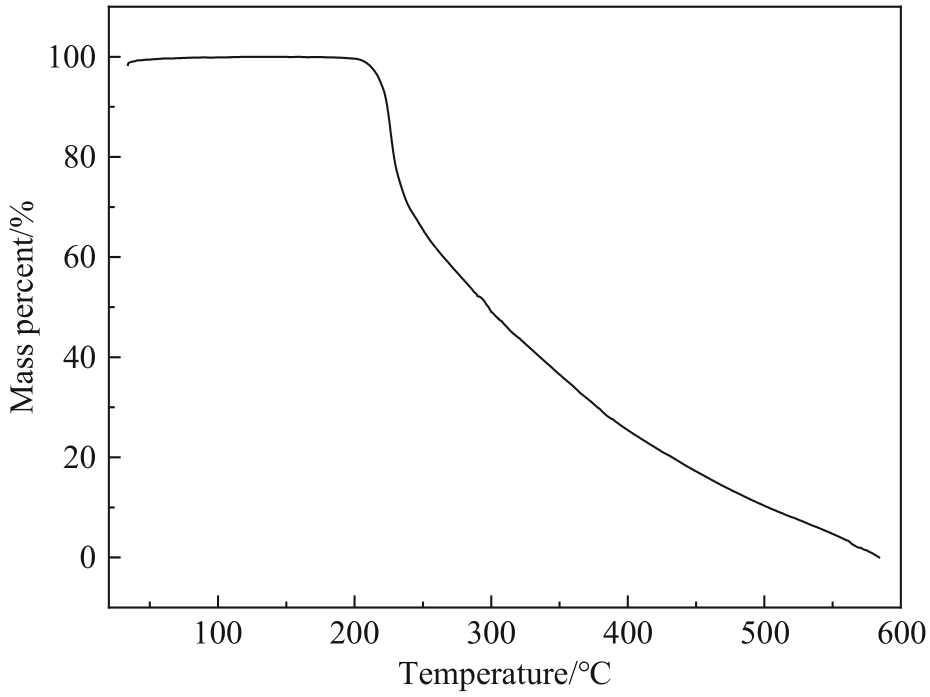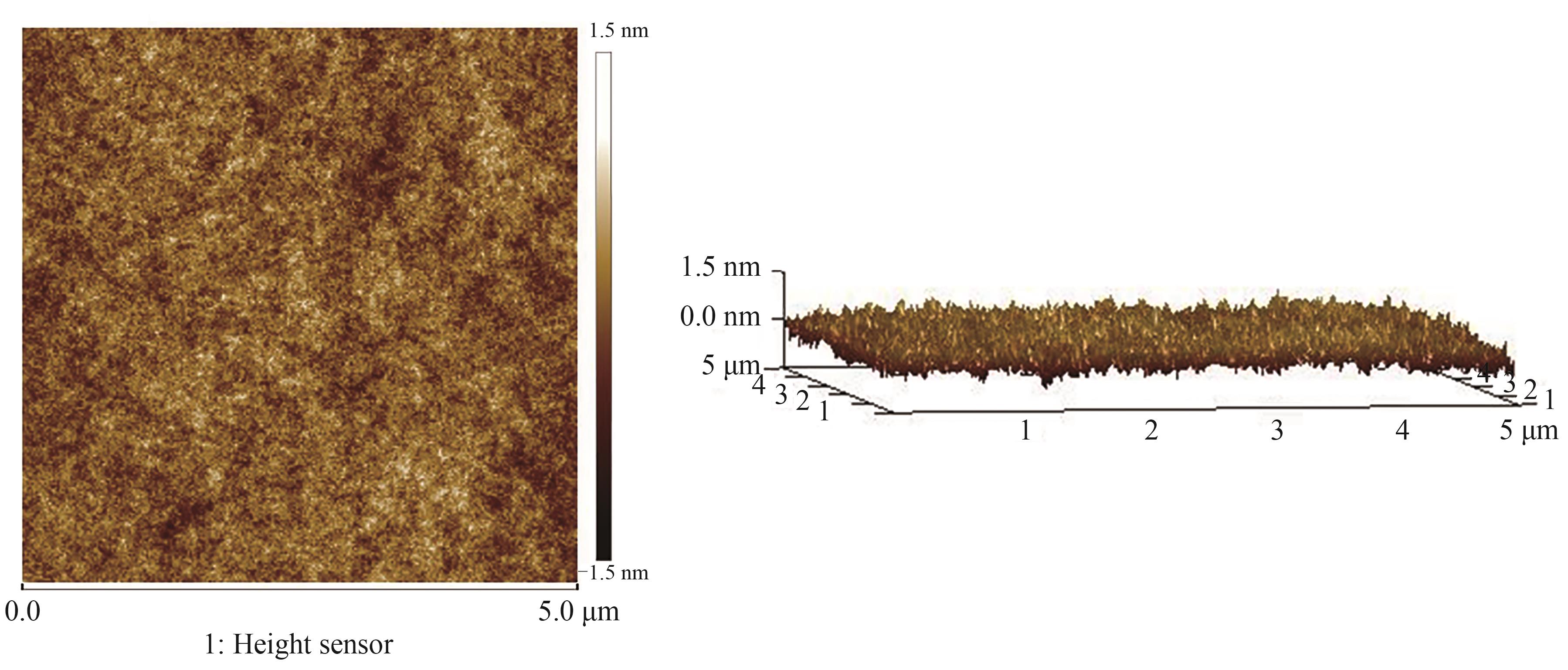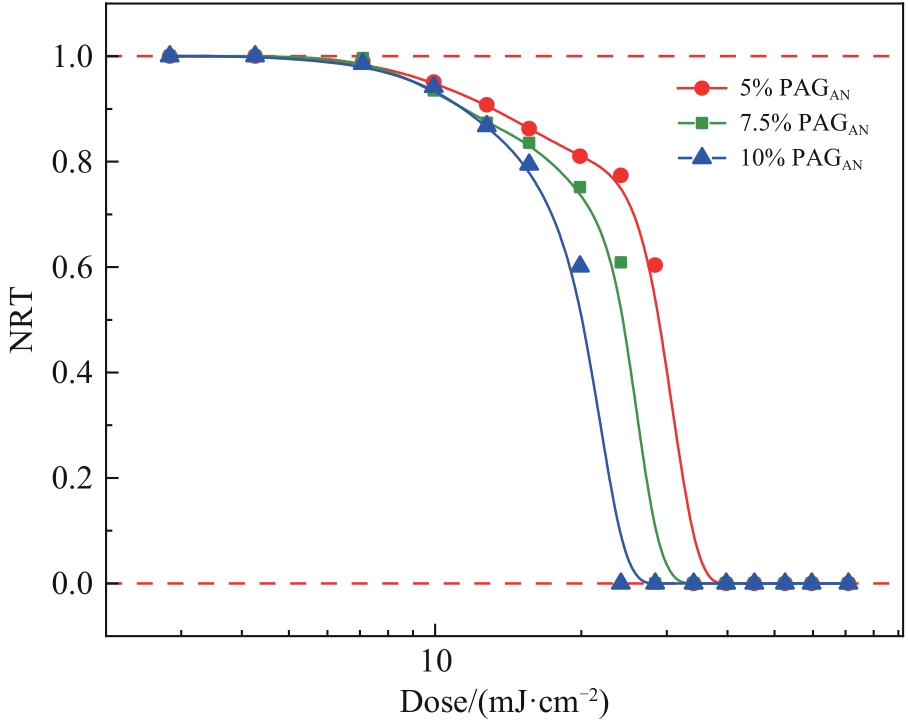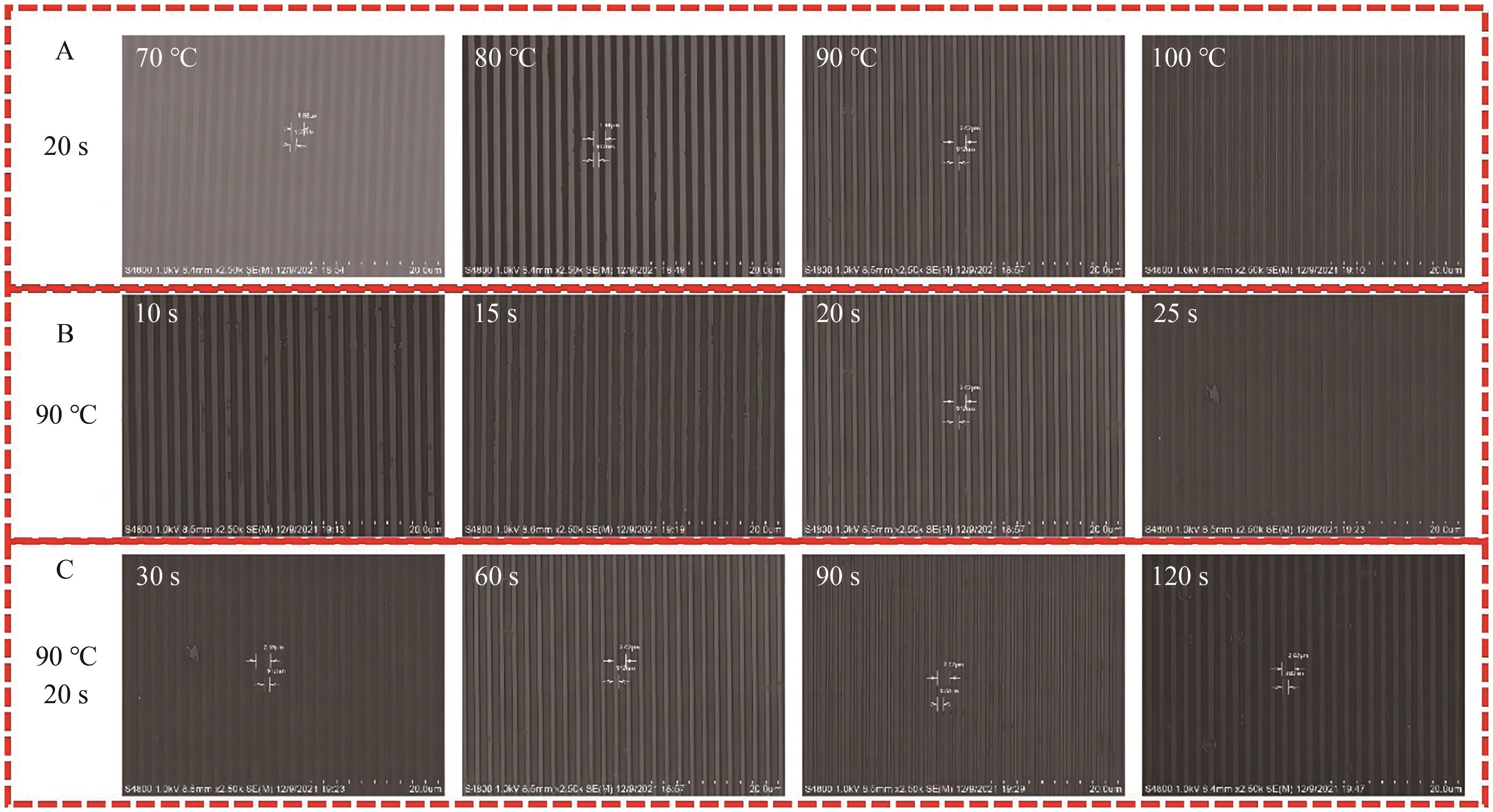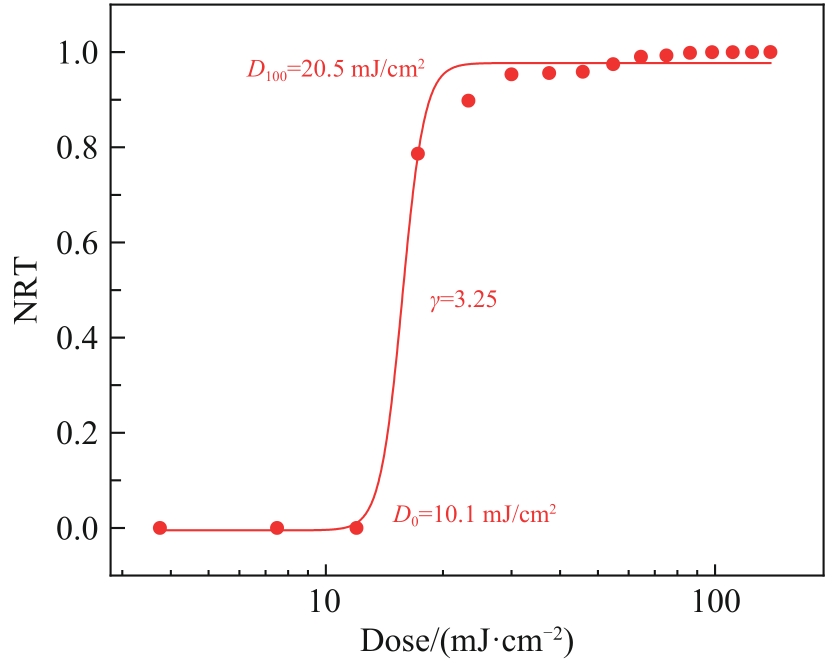
Chinese Journal of Applied Chemistry ›› 2024, Vol. 41 ›› Issue (7): 1024-1034.DOI: 10.19894/j.issn.1000-0518.240036
• Full Papers • Previous Articles Next Articles
A Dual-Tone Chemically Amplified Molecular Photoresist for Multi-Purpose Lithography
Xiao-Dong YUAN1,2, Jin-Ping CHEN1,2( ), Tian-Jun YU1, Yi ZENG1,2, Yi LI1,2(
), Tian-Jun YU1, Yi ZENG1,2, Yi LI1,2( )
)
- 1.Key Laboratory of Photochemical Conversion and Optoelectronic Materials,Technical Institute of Physics and Chemistry,Chinese Academy of Sciences,Beijing 100190,China
2.University of Chinese Academy of Sciences,Beijing 100049,China
-
Received:2024-02-01Accepted:2024-05-07Published:2024-07-01Online:2024-08-03 -
Contact:Jin-Ping CHEN,Yi LI -
About author:yili@mail.ipc.ac.cn
chenjp@mail.ipc.ac.cn
-
Supported by:the National Natural Science Foundation of China(22090012)
CLC Number:
Cite this article
Xiao-Dong YUAN, Jin-Ping CHEN, Tian-Jun YU, Yi ZENG, Yi LI. A Dual-Tone Chemically Amplified Molecular Photoresist for Multi-Purpose Lithography[J]. Chinese Journal of Applied Chemistry, 2024, 41(7): 1024-1034.
share this article
Add to citation manager EndNote|Ris|BibTeX
URL: http://yyhx.ciac.jl.cn/EN/10.19894/j.issn.1000-0518.240036
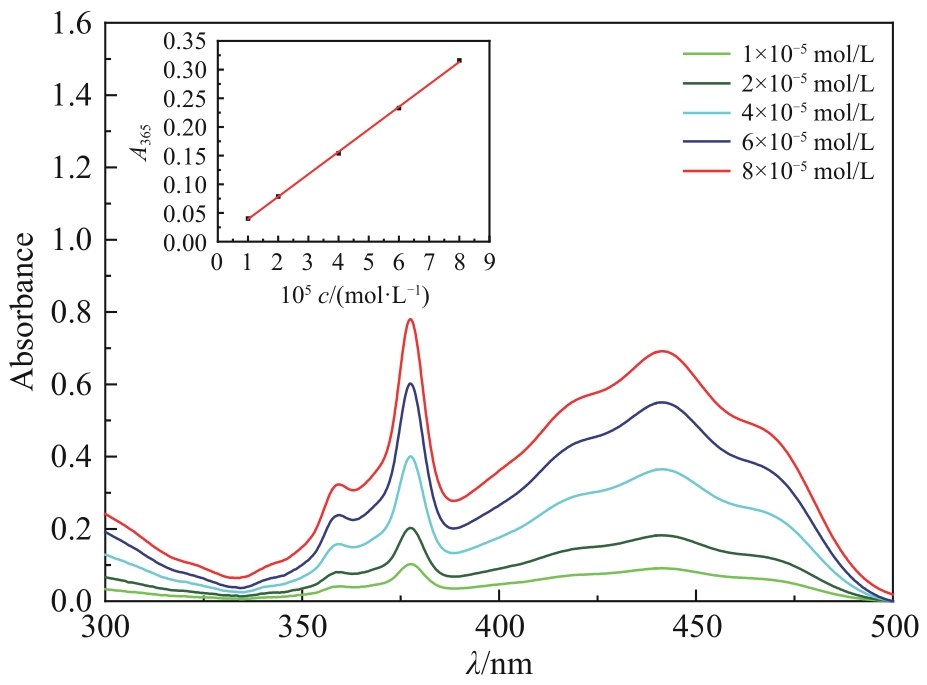
Fig.2 Absorption spectra of PAGAN with different concentrations in acetonitrile, the inset shows the fitted curve of absorbance at 365 nm of PAGAN as a function of concentration
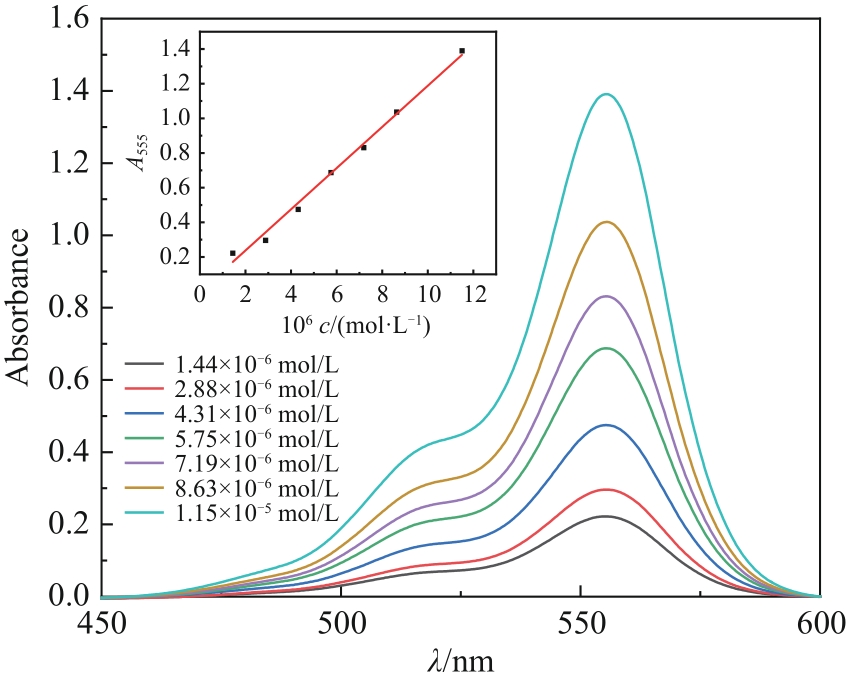
Fig.3 Absorption spectra of rhodamine B in acetonitrile with different concentrations of trifluoromethanesulfonic acid; the inset shows the fitted curve of the absorbance at 555 nm of rhodamine B as a function of acid concentration
| 5.0% PAGAN | 7.5% PAGAN | 10.0% PAGAN | |
|---|---|---|---|
| D0/(mJ·cm-2) | 13.0 | 11.5 | 10.2 |
| D100/(mJ·cm-2) | 34.1 | 28.6 | 23.9 |
| γ | 2.38 | 2.52 | 2.70 |
Table 1 Contrasts and sensitivities of SP8-PAGAN photoresists (5.0%, 7.5%, 10.0% PAGAN) at 365 nm lithography
| 5.0% PAGAN | 7.5% PAGAN | 10.0% PAGAN | |
|---|---|---|---|
| D0/(mJ·cm-2) | 13.0 | 11.5 | 10.2 |
| D100/(mJ·cm-2) | 34.1 | 28.6 | 23.9 |
| γ | 2.38 | 2.52 | 2.70 |
| 1 | MOORE G E. Cramming more components onto integrated circuits[J]. Proc IEEE, 1998, 86(1): 82-85. |
| 2 | WEI W, LIU J C, LI H, et al. Development and application of microelectronic photoresist[J]. Prog Chem, 2014, 26(11): 1867-1888. |
| 3 | 顾雪松, 李小欧, 刘亚栋, 等. g-线/i-线光刻胶研究进展[J]. 应用化学, 2021, 38(9): 1091-1104. |
| GU X S, LI X O, LIU Y D, et al. Research progress on g-line and i-line photoresists[J]. Chin J Appl Chem, 2021, 38(9): 1091-1104. | |
| 4 | 陆新宇, 马彬泽, 罗皓, 等. 二氧化碳基聚碳酸环己撑酯电子束光刻胶显影工艺优化[J]. 应用化学, 2021, 38(9): 1189-1198. |
| LU X Y, MA B Z, LUO H, et al. Optimization of development process for carbon dioxide-based poly(cyclohexene carbonate) electron beam resist[J]. Chin J Appl Chem, 2021, 38(9): 1189-1198. | |
| 5 | HANABATA M, OI F, FURUTA A. Novolak design concept for high performance positive photoresists[J]. Polym Eng Sci, 1992, 32(20): 1494-1499. |
| 6 | ITO H, SOORIYAKUMARAN R. Recent progress in chemical amplification resists for excimer laser lithography: reverse polarity change via pinacol rearrangement[J]. Photopolym Sci Technol, 1991, 4(3): 319-335. |
| 7 | SHIRAI M, TSUNOOKA M. Photoacid and photobase generators: chemistry and applications to polymeric materials[J]. Prog Polym Sci, 1996, 21(1): 1-45. |
| 8 | SMETS G, AERTS A, ERUM J V. Photochemical initiation of cationic polymerization and its kinetics[J]. Polym J, 1980, 12(9): 539-547. |
| 9 | CRIVELLO J V, LEE J L. Alkoxy-substituted diaryliodonium salt cationic photoinitiators[J]. J Polym Sci, Part A: Polym Chem, 1989, 27(12): 3951-3968. |
| 10 | CRIVELLO J V, LAM J H W. Diaryliodonium salts. a new class of photoinitiators for cationic polymerization[J]. Macromolecules, 1977, 10(6): 1307-1315. |
| 11 | CRIVELLO J V, LAM J H W. Complex triarylsulfonium salt photoinitiators. I. the identification, characterization, and syntheses of a new class of triarylsulfonium salt photoinitiators[J]. J Polym Sci Polym Chem Ed, 1980, 18(8): 2677-2695. |
| 12 | SAEVA F D, MORGAN B P, LUSS H R. Photochemical conversion of sulfonium salts to sulfides via a 1,3-sigmatropic rearrangement. Photogeneration of broensted acids[J]. J Org Chem, 1985, 50(22): 4360-4362. |
| 13 | CRIVELLO J V, LEE J L. Photosensitized cationic polymerizations using dialkylphenacylsulfonium and dialkyl(4-hydroxyphenyl)sulfonium salt photoinitiators[J]. Macromolecules, 1981, 14(5): 1141-1147. |
| 14 | ABU-ABDOUN I I, AALE A. Cationic photopolymerization of p-methylstyrene initiated by phosphonium and arsonium salts[J]. Eur Polym J, 1993, 29(11): 1439-1443. |
| 15 | NECKERS D C, ABU-ABDOUN I I. p,p'-Bis((triphenylphosphonio)methyl)benzophenone salts as photoinitiators of free radical and cationic polymerization[J]. Macromolecules, 1984, 17(12): 2468-2473. |
| 16 | KOMOTO K, ISHIDOYA M, OGAWA H, et al. Photopolymerization of vinyl ether by hydroxy- and methylthio-alkylphosphonium salts as novel photocationic initiators[J]. Polymer, 1994, 35(1): 217-218. |
| 17 | YAMATO H, ASAKURA T, HINTERMANN T, et al. Novel nonionic photoacid generator releasing strong acid for chemically amplified resists[C]//Advances in Resist Technology and Processing XXI. SPIE, 2004, 5376: 103-114. |
| 18 | ASAKURA T, YAMATO H, MATSUMOTO A, et al. A novel photoacid generator for chemically amplified resists with ArF exposure[C]//Advances in Resist Technology and Processing XX. SPIE, 2003, 5039: 1155-1163. |
| 19 | SCHWARTZKOPF G, NIAZY N, DAS S, et al. Onium salt structure/property relationships in poly(4-tert-butyloxycarbonyloxystyrene) deep-UV resists[C]//Advances in Resist Technology and Processing VIII. SPIE, 1991, 1466: 26-38. |
| 20 | ASAKURA T, YAMATO H, MATSUMOTO A, et al. Novel photoacid generators for chemically amplified resists[J]. J Photopolym Sci Technol, 2003, 16(3): 335-345. |
| 21 | OIZUMI H, TANAKA Y, KUMISE T, et al. Patterning capability of new molecular resist in EUV lithography[J]. Microelectron Eng, 2007, 84(5): 1049-1053. |
| 22 | OIZUMI H, KUMASAKA F, TANAKA Y, et al. Performance of molecular resist based on polyphenol in EUV lithography[J]. Microelectron Eng, 2006, 83(4): 1107-1110. |
| 23 | CHINI S F, AMIRFAZLI A. Understanding pattern collapse in photolithography process due to capillary forces[J]. Langmuir, 2010, 26(16): 13707-13714. |
| 24 | HU S, CHEN J, YU T, et al. A novel dual-tone molecular glass resist based on adamantane derivatives for electron beam lithography[J]. J Mater Chem C, 2022, 10(26): 9858-9866. |
| 25 | CAO H Z, ZHENG M L, DONG X Z, et al. Two-photon nanolithography of positive photoresist thin film with ultrafast laser direct writing[J]. Appl Phys Lett, 2013, 102(20): 201108. |
| 26 | JIN F, LIU J, ZHAO Y Y, et al. λ/30 inorganic features achieved by multi-photon 3D lithography[J]. Nat Commun, 2022, 13(1): 1357. |
| 27 | JI J X, XU P F, LIN Z W, et al. Application of the metal reflector for redistributing the focusing intensity of SPPs[J]. Nanomaterials, 2020, 10(5): 937. |
| 28 | YAMAGUCHI T, YAMADA T, TERAO A, et al. Fabrication of hp 32 nm resist patterns using near-field lithography[J]. Microelectron Eng, 2007, 84(5): 690-693. |
| 29 | FANG N, LEE H, SUN C, et al. Sub-diffraction-limited optical imaging with a silver superlens[J]. Science, 2005, 308(5721): 534-537. |
| 30 | LUO X, ISHIHARA T. Surface plasmon resonant interference nanolithography technique[J]. Appl Phys Lett, 2004, 84(23): 4780-4782. |
| 31 | CHEN J, HAO Q, WANG S, et al. Molecular glass resists based on 9,9′-spirobifluorene derivatives: pendant effect and comprehensive evaluation in extreme ultraviolet lithography[J]. ACS Appl Polym Mater, 2019, 1(3): 526-534. |
| 32 | YAO J H, CHI C, WU J, et al. Bisanthracene bis(dicarboxylic imide)s as soluble and stable NIR dyes[J]. Chem Eur J, 2009, 15(37): 9299-9302. |
| 33 | IWASHIMA C, IMAI G, OKAMURA H, et al. Synthesis of i- and g-line sensitive photoacid generators and their application to photopolymer systems[J]. J Photopolym Sci Technol, 2003, 16(1): 91-96. |
| [1] | Zi-Li LI, Xing-Ran XU, Jiang-Hao ZHAN, Xiao-Hua HU, Zi-Ying ZHANG, Shi-Sheng XIONG. Advanced Materials for Lithography [J]. Chinese Journal of Applied Chemistry, 2022, 39(6): 859-870. |
| [2] | LU Xin-Yu, MA Bin-Ze, LUO Hao, QI Huan, LI Qiang, WU Guang-Peng. Optimization of Development Process for Carbon Dioxide-Based Poly(cyclohexene carbonate) Electron Beam Resist [J]. Chinese Journal of Applied Chemistry, 2021, 38(9): 0-0. |
| [3] | PENG Xiao-Kang, HUANG Xing-Wen, LIU Rong-Tao, ZHANG Yong-Wen, ZHANG Shi-Yang, LIU Yi-Dong, MIN Yong-Gang. Photoresist Film-Forming Agent: Development and Future [J]. Chinese Journal of Applied Chemistry, 2021, 38(9): 1079-1090. |
| [4] | GU Xue-Song, LI Xiao-Ou, LIU Ya-Dong, JI Sheng-Xiang. Research Progress on g-Line and i-Line Photoresists [J]. Chinese Journal of Applied Chemistry, 2021, 38(9): 1091-1104. |
| [5] | LI Xiao-Ou, GU Xue-Song, LIU Ya-Dong, JI Sheng-Xiang. Research Progress on Chemically Amplified 193 nm Photoresists [J]. Chinese Journal of Applied Chemistry, 2021, 38(9): 1105-1118. |
| [6] | GAO Jia-Xing, CHEN Long, YU Jia-Ting, GUO Xu-Dong, HU Rui, WANG Shuang-Qing, CHEN Jin-Ping, LI Yi, YANG Guo-Qiang. Research Progress on High Resolution Extreme Ultraviolet Photoresist [J]. Chinese Journal of Applied Chemistry, 2021, 38(9): 1138-1153. |
| [7] | LU Xin-Yu, MA Bin-Ze, LUO Hao, QI Huan, LI Qiang, WU Guang-Peng. Optimization of Development Process for Carbon Dioxide-Based Poly(cyclohexene carbonate) Electron Beam Resist [J]. Chinese Journal of Applied Chemistry, 2021, 38(9): 1189-1198. |
| Viewed | ||||||
|
Full text |
|
|||||
|
Abstract |
|
|||||

